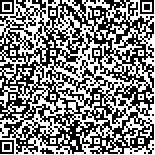本文已被:浏览 251次 下载 236次
投稿时间:2023-10-11 网络发布日期:2024-08-20
投稿时间:2023-10-11 网络发布日期:2024-08-20
中文摘要: 常见的小儿脑损伤主要包括新生儿缺血缺氧性脑病、创伤性脑损伤、脑瘫、脑出血等,这类疾病在临床上较难治疗,可引起不可逆的损伤,导致严重的后遗症。脑损伤发病机制复杂,普遍认为神经炎症、缺血、细胞凋亡是引起脑损伤的关键因素。基于小儿大脑未成熟时有强大的神经重塑性,故小儿脑损伤已成为再生医学上有吸引力且有发展前景的研究方向。来自人脐血间充质干细胞来源的外泌体(hUMSC-Exos)在无细胞治疗方面隐藏着巨大的潜能,在不久的将来是替代细胞和药物治疗的新策略和新突破。本文将以hUMSC-Exos通过介导不同的信号通路及表达因子等分子机制减少神经炎症、促进神经再生、刺激血管生成、抗细胞凋亡修复脑损伤的过程展开综述。
中文关键词: 脑损伤; 人脐血间充质干细胞; 外泌体; 小儿 无细胞治疗
Abstract:Common pediatric brain injuries mainly include neonatal ischemic-hypoxic encephalopathy, traumatic brain injury, cerebral palsy, cerebral hemorrhage, etc., which are difficult to treat clinically and can cause irreversible damage and lead to serious sequelae. The pathogenesis of brain injury is complex, and neuroinflammation, ischemia, and apoptosis are generally considered to be the key factors causing brain injury. Based on the strong neural remodeling of the immature brain in children, pediatric brain injury has become an attractive and promising research direction in regenerative medicine. Human umbilical cord-derived mesenchymal stem cell-derived exosomes (hUMSC-Exos) have great potential in cell-free therapy, and are new strategies and breakthroughs in alternative cell and drug therapy in the near future. This paper reviews the process of reducing neuroinflammation, promoting nerve regeneration, stimulating angiogenesis, and anti-apoptosis to repair brain injury by mediating different molecular mechanisms such as different signaling pathways and expression factors.
keywords: Brain injury Human umbilical cord blood mesenchymal stem cells Exosomes Pediatrics Cell-free therapy
文章编号: 中图分类号:R720.5 文献标志码:A
基金项目:甘肃省自然科学基金项目(22JR5RA689);甘肃省青年科技基金计划项目(22JR5RA701);甘肃省人民医院院内科研基金项目(20GSSY1-13)
附件
| 作者 | 单位 |
| 吴世丽 | 1. 甘肃中医药大学,甘肃 兰州 730000; |
| 赛依帕 | 1. 甘肃中医药大学,甘肃 兰州 730000;2. 甘肃省人民医院儿科,甘肃 兰州 730000; |
| 陈星星 | 2. 甘肃省人民医院儿科,甘肃 兰州 730000 |
| 胡筱霞 | 2. 甘肃省人民医院儿科,甘肃 兰州 730000 |
| 赵海燕 | 2. 甘肃省人民医院儿科,甘肃 兰州 730000 |
| Author Name | Affiliation |
| WU Shili, SAI Yipa, CHEN Xingxing, HU Xiaoxia, ZHAO Haiyan | *Gansu University of Chinese Medicine, Lanzhou, Gansu 730000, China |
引用文本:
吴世丽,赛依帕,陈星星,等.脐血间充质干细胞外泌体在小儿脑损伤中的应用研究[J].中国临床研究,2024,37(8):1278-1283.
吴世丽,赛依帕,陈星星,等.脐血间充质干细胞外泌体在小儿脑损伤中的应用研究[J].中国临床研究,2024,37(8):1278-1283.
